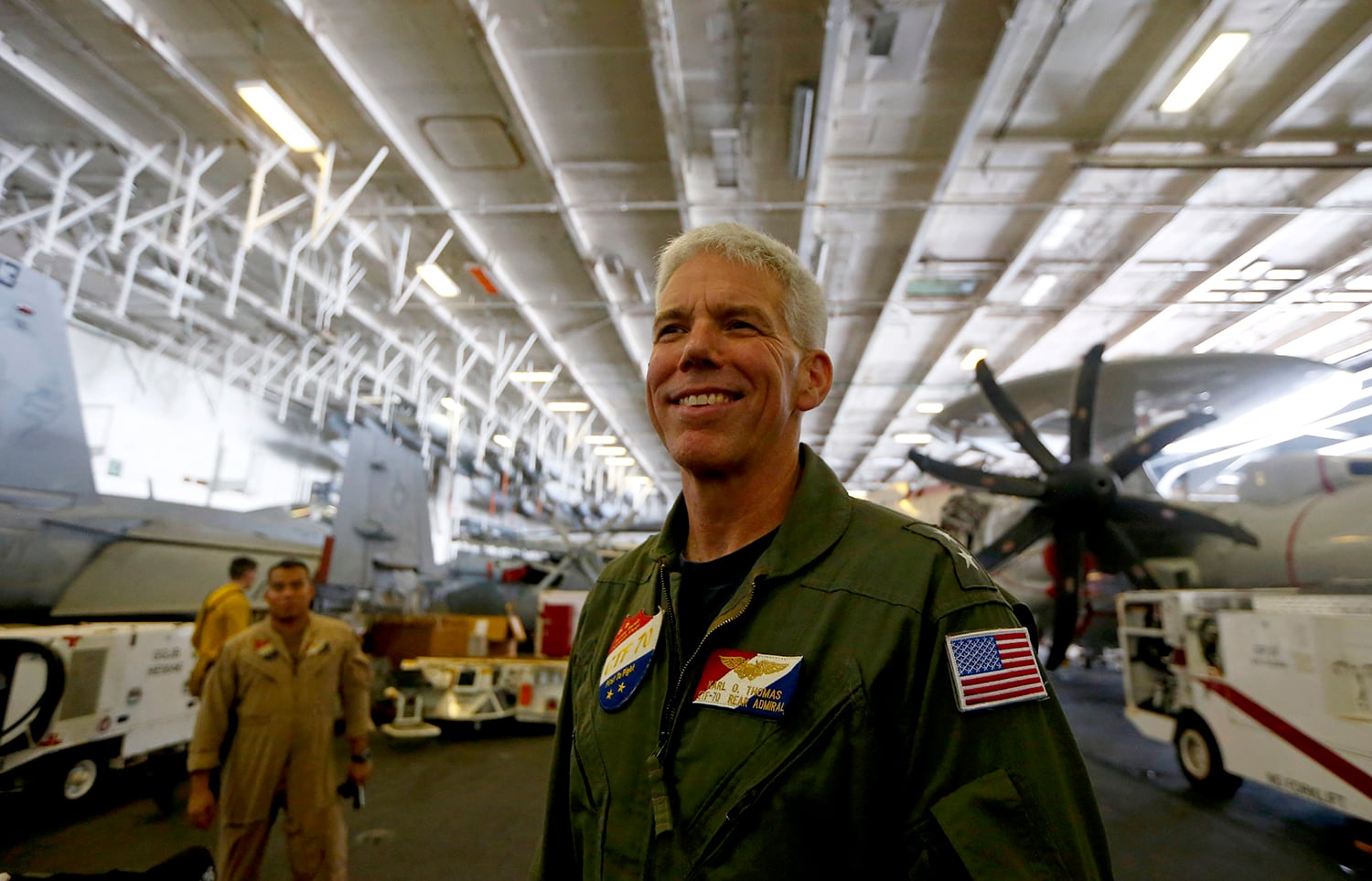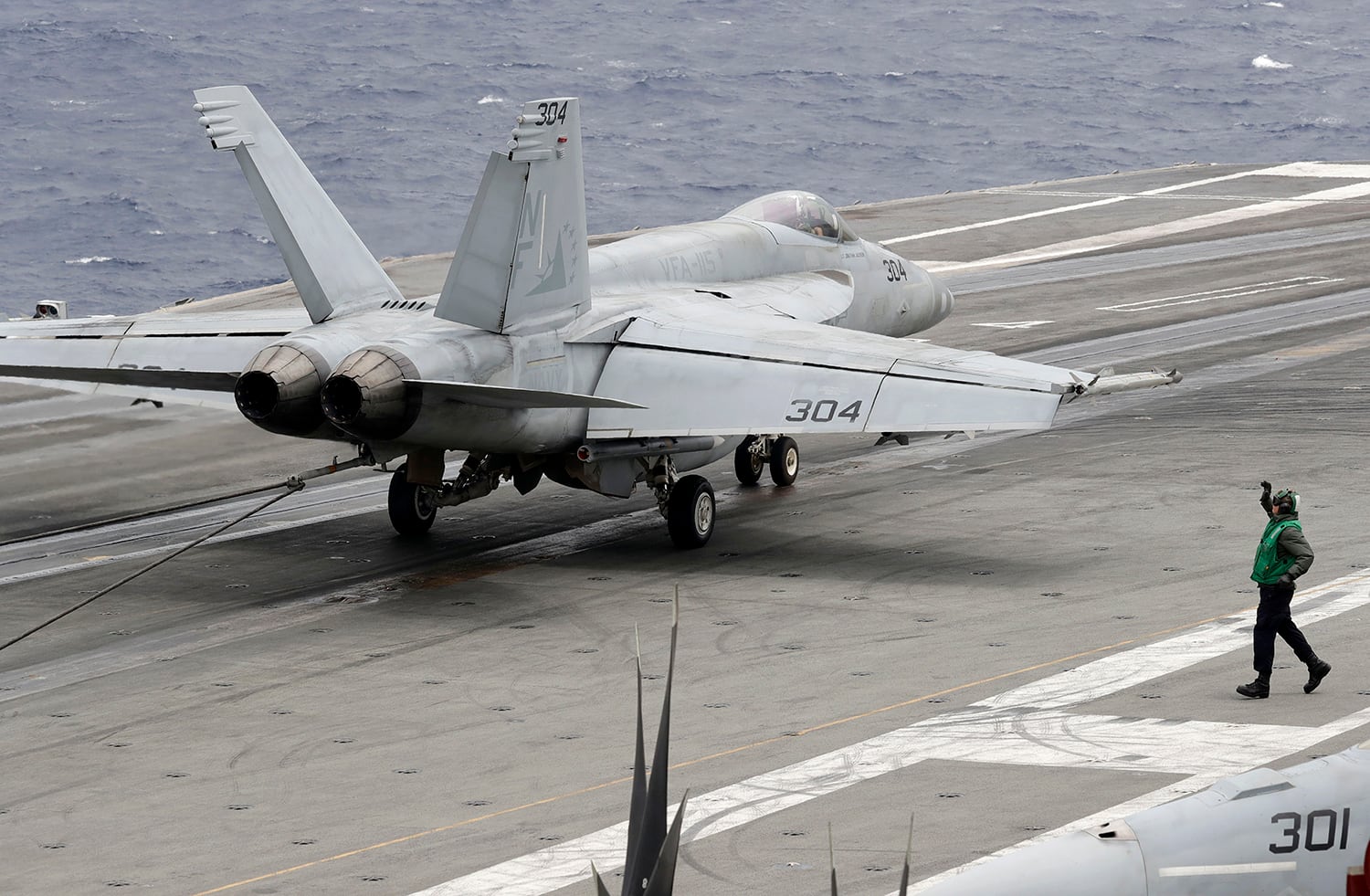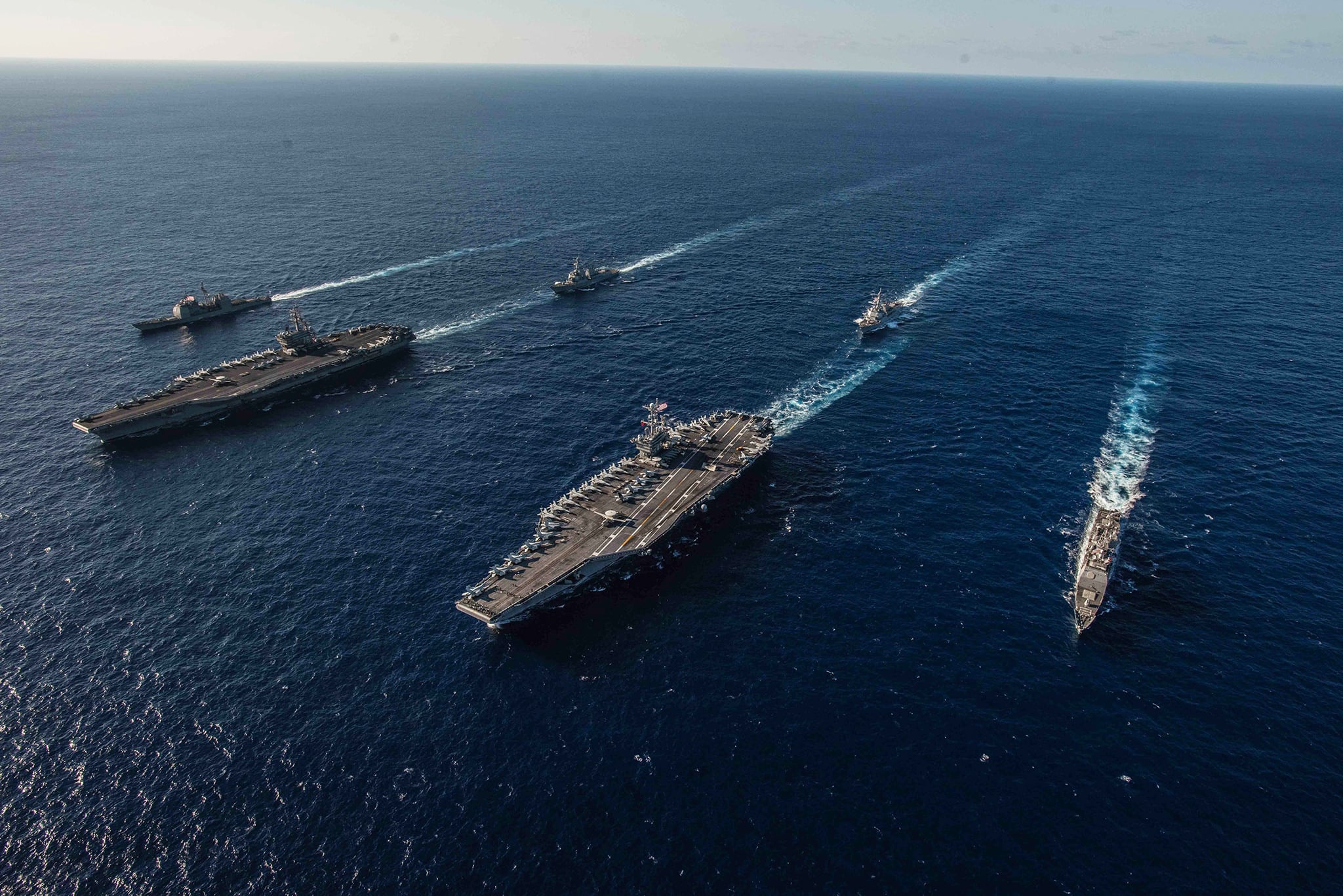ABOARD THE RONALD REAGAN, South China Sea — A U.S. aircraft carrier sailed through the disputed South China Sea on Tuesday in the latest show of America’s military might amid new territorial flare-ups involving China and three rival claimant states.
The U.S. Navy flew a small group of Philippine generals, officials and journalists to the aircraft carrier Ronald Reagan, where they watched fighter jets landing and taking off by catapult with thunderous blasts. The nuclear-powered carrier, carrying about 70 supersonic F/A-18 jets, spy planes and helicopters, was en route to Manila for a port visit.
Armed cruisers kept watch a few miles (kilometers) away from the carrier.
“The motto of this carrier is peace through strength,” Rear Adm. Karl Thomas told journalists.

He said the American military presence helps provide security and stability that foster diplomatic talks among rival claimant nations. He made the comment when asked what message the warship’s presence was sending amid new tensions involving China and rival claimants Vietnam, Malaysia and the Philippines over long-contested territories.
“We just think that folks should follow the international law and our presence allows us to provide that security and stability in the background for these discussions to take place,” Thomas said.
China, Vietnam, the Philippines, Malaysia, Taiwan and Brunei have been locked in on-and-off territorial conflicts over the strategic waters, where a bulk of Asian and world commerce transits, for decades. Tensions rose to new highs when China transformed seven disputed reefs in the Spratly chain into islands and then installed a missile-defense system, runways and hangars.
Last month, Washington expressed concerns over China’s “repeated provocative actions aimed at the offshore oil and gas development of other claimant states.”
Vietnam has demanded that China remove a survey ship from Vanguard Bank, which it says lies within Vietnam’s 200-mile exclusive economic zone. China has had a dispute with Malaysia over Luconia Shoal and Manila protested after a Chinese fishing vessel hit a fishing boat with 22 Filipinos at Reed Bank and left as it sank at night in June. The Filipinos were rescued by a Vietnamese fishing vessel.

Greg Poling, director of the Washington-based Asia Maritime Transparency Initiative, which tracks actions by rival states in the disputed waters, said China is using its artificial islands to bolster its vast claims and allow its navy, coast guard and militia vessels “to operate over every inch of the South China Sea in a way they never could before.”
China’s assertive actions will also undermine negotiations between China and the Association of Southeast Asian Nations on a so-called code of conduct to check aggressive actions in the disputed waters, according to Carl Thayer, another South China Sea expert.
RELATED

The 10-nation ASEAN bloc includes four nations contesting China’s territorial claims. Chinese President Xi Jinping has expressed hope the proposed code may be concluded in three years.
“One must ask what will be left for ASEAN claimant states to negotiate if China continues to control access to fishing grounds and hydrocarbon exploration,” Thayer said.
Associated Press journalist Bullit Marquez contributed to this report.





